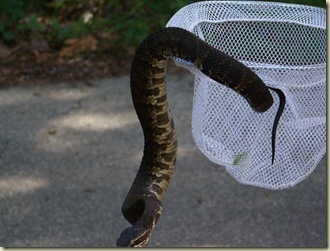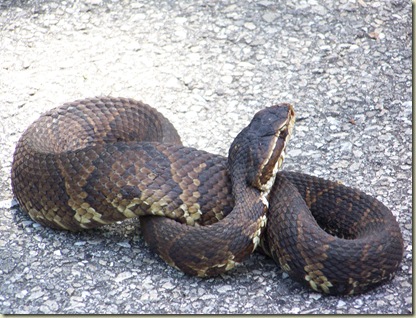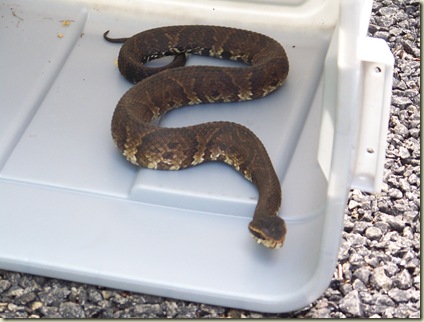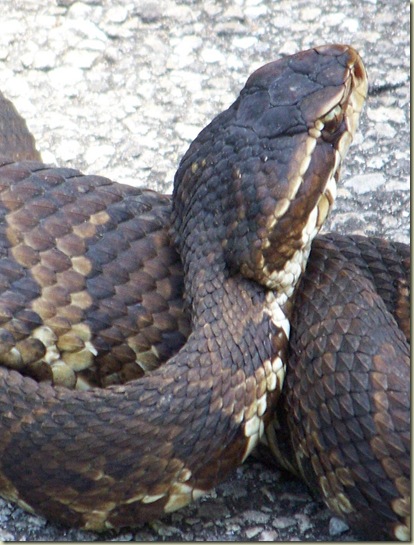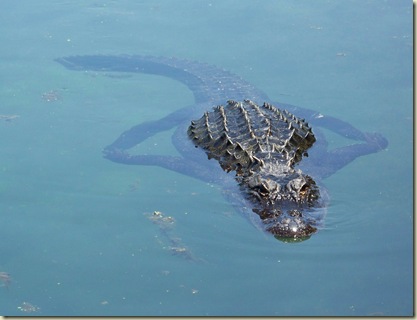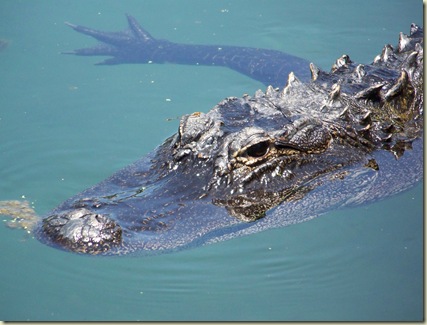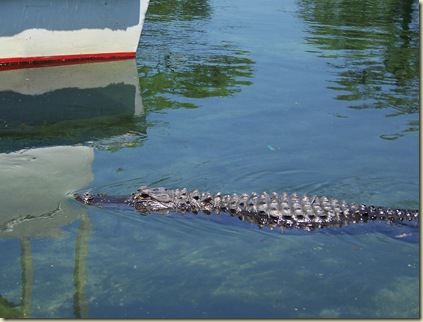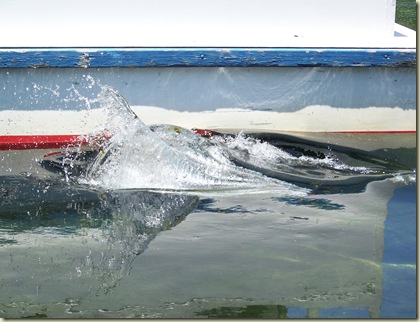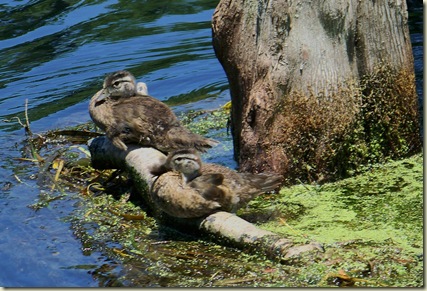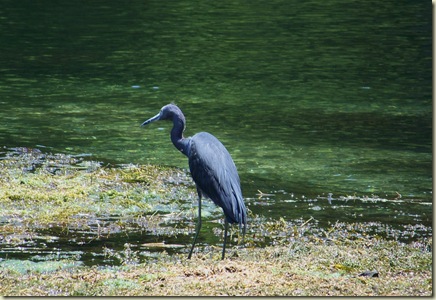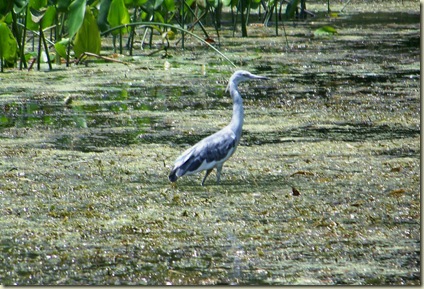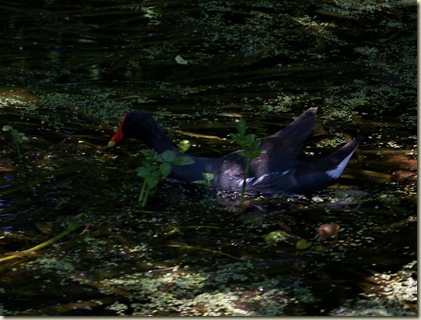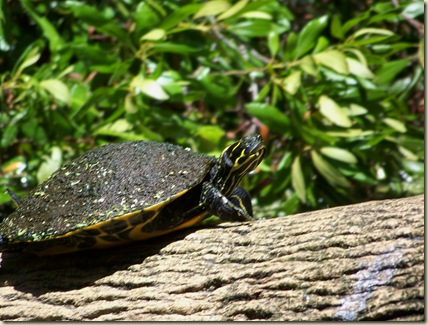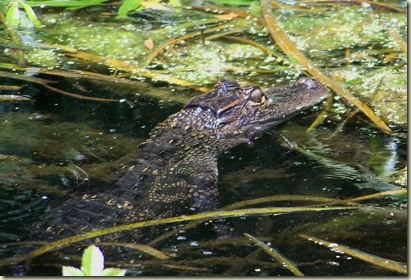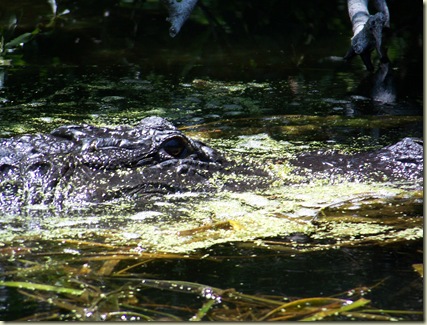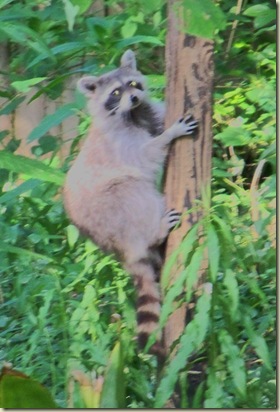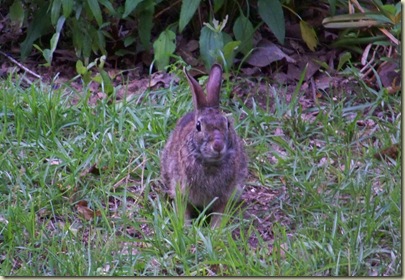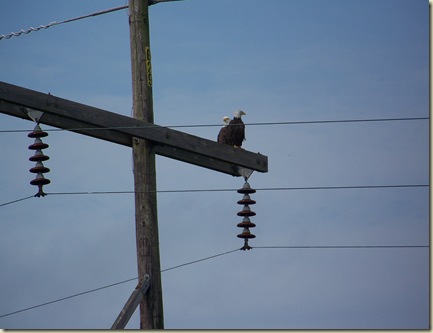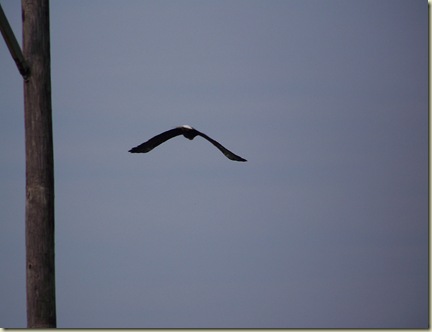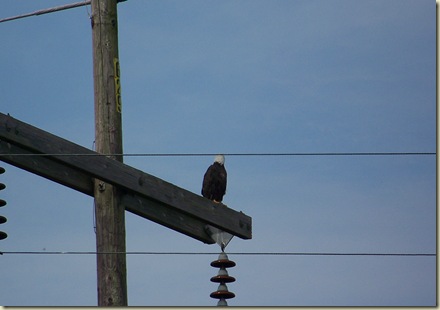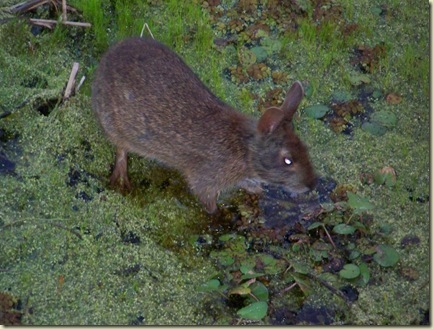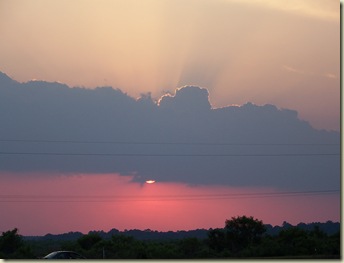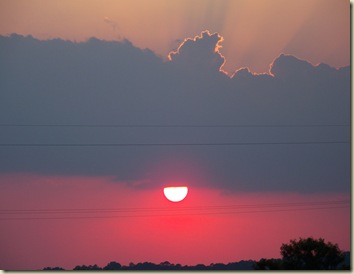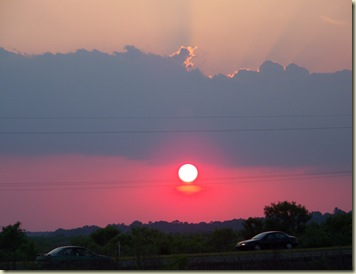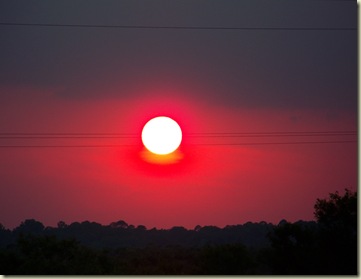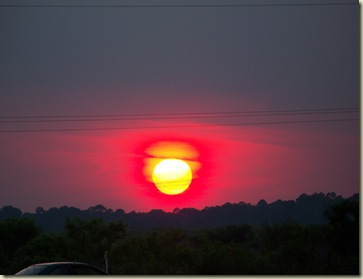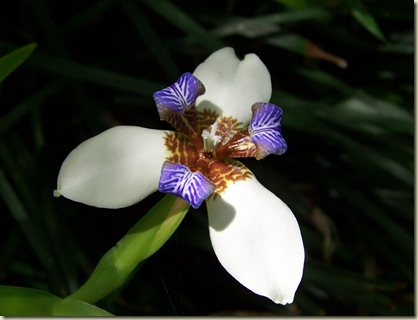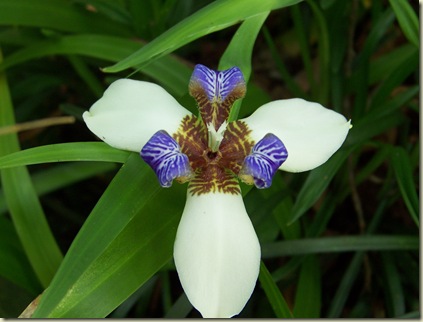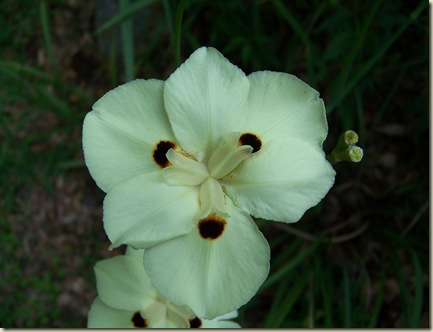I (S) was cutting flowers from the butterfly garden yesterday when I heard a loud rustling noise. I thought it was a neighborhood cat. They get in there all the time. I looked but did not see it. So I began to think of other mammals---squirrels, rabbits, raccoons--all of which are in our yard in the daylight. I still saw nothing ---and then I did. It was a snake. A big, dark one. I could see the head with its triangular shape. Both banded water snakes and moccasins have that same general shape and coloring.
I whistled for B and he came out. Of course, by then the snake had gone up in the red tip hedge--think row of trees. In that deep shade, neither B nor the neighbor could tell what kind of snake it was. The two of them herded the snake through the hedge down the length of our front yard and into a net near the street.
The neighbor was pretty sure it was a banded water snake. We have had them to get in our little goldfish pond by the door before. I requested that they not release it across the cul-de-sac where the swamp is, thinking it would come right back. So it was put in a large Rubbermaid tub (with lid!) and driven to another swamp down the road a bit and released there.
Soooo.... the sons passed through town last night and we showed them the pictures still on the camera. This past week, they had been taking a class at the Jones Center in Newton, GA where they met a herpetologist. They forwarded the pictures to him for ID-ing and here is what he wrote:
Yep, what you got there is a pretty cottonmouth aka "water moccasin." ID characteristics are the vertical eye pupil, the arrow shaped head and the keeled scale (there is a pinch type looking thing going down the scale). Venomous and pretty common in Florida, Agkistrodon piscivorus conanti.
Thanks, Kevin, for the ID.
So we went back and looked at the picture a little more closely and sure enough in the lower right hand corner, you can see those keeled scales.
No more sandals in the garden now!

